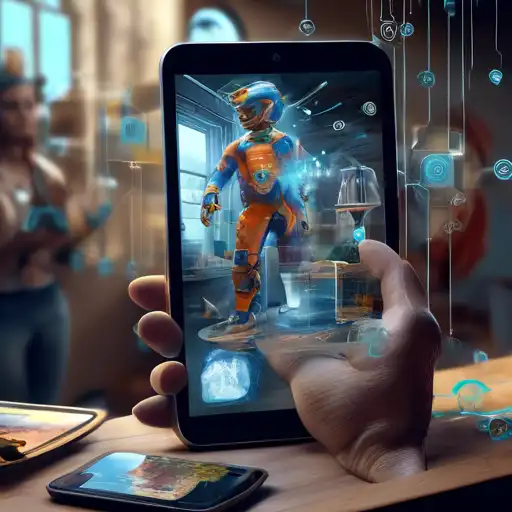Introduction to Augmented Reality
Augmented Reality (AR) is transforming the way we interact with the world around us by overlaying digital information onto the physical environment. This innovative technology has found applications in various sectors, including education, healthcare, retail, and entertainment, offering immersive experiences that were once the realm of science fiction.
How Augmented Reality Works
At its core, AR technology uses sensors and algorithms to detect the user's environment and superimpose computer-generated images, sounds, or other data onto the real world. This seamless integration is achieved through devices such as smartphones, tablets, and AR glasses, making digital interactions more intuitive and engaging.
Applications of Augmented Reality
AR's versatility is evident in its wide range of applications. In retail, for example, customers can visualize products in their own space before making a purchase. In education, AR can bring complex concepts to life, enhancing learning and retention. The healthcare sector benefits from AR through improved surgical precision and patient care.
- Retail: Virtual try-ons and in-store navigation.
- Education: Interactive learning materials and virtual field trips.
- Healthcare: Surgical simulations and patient education tools.
- Entertainment: Immersive games and live events.
The Future of Augmented Reality
As technology advances, the potential for AR continues to expand. With the development of more sophisticated AR glasses and the integration of AI, the line between the digital and physical worlds will blur even further. This evolution promises to revolutionize industries, create new forms of entertainment, and change the way we live and work.
For those interested in exploring more about how technology is shaping our future, check out our article on The Impact of Virtual Reality on Modern Society.
Challenges and Considerations
Despite its potential, AR faces challenges such as privacy concerns, technological limitations, and the need for widespread adoption. Addressing these issues is crucial for maximizing AR's benefits and ensuring its responsible use.
Augmented Reality is not just a technological innovation; it's a new way of experiencing the world. By blending digital with physical, AR opens up endless possibilities for creativity, learning, and connection.
